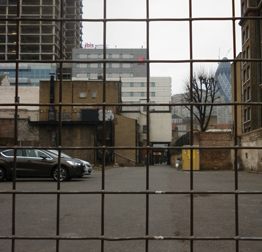Author: David Weisburd et al
ISBN No: 9781107609495
Review date: 20/04/2024
No of pages: 200
Publisher: Cambridge University Press
Publisher URL:
http://www.cambridge.org/gb/academic/subjects/sociology/criminology/place-matters-criminology-twenty-first-century
Year of publication: 07/06/2016
Brief:
Place Matters Criminology for the Twenty-First Century
The clue is in the neat title of a short and reasonably-priced collection of chapters by American scholars; as it is in the sub-title; writes Mark Rowe.
Place Matters: Criminology for the 21st century notes the ‘fact’ (page 113) that crime and disorder are concentrated in a few places. Their argument; concentrate on ‘where done it’, rather than ‘who done it’.
Now criminology among some private security practitioners has a bad name; or, it simply doesn’t register. Like other -ologies in the social sciences, the directions that criminology is taking – laying into the global corporate economy as ‘crimogenic’ and wrong – sometimes looks like wishful left-wing thinking. Which is a pity, as criminology not only could be a way of understanding crime, but it can draw on many other specialisms, as a genuinely interesting and stimulating branch of knowledge. Take the ‘crime solving triangle‘ of victim-target, opportunity and location. For a crime to happen, the theory goes, you need people – the person to do the crime and with the motive to want to do it (psychology), the chance to do it, whether over a short time or in a particular place (an alley, an ill-lit part of a car park, lacking a ‘capable guardian’; all in a place – geography) and opportunity (psychology again). Mapping crime to find any ‘hot-spots’ draws on computer science, and statistics.
The potential insights also mean that police and private security (or ‘social control agents’, to use the authors term) can act based on evidence and not conventional wisdom or what fits the budgets and habits of the patrollers. What works to reduce crime – CCTV, better lighting, and other gadgets? Or a human presence deterring crime – and if so, what sort of things should the patrollers be looking for and to do? Does non-crime or non-security things, such as tidying up litter, have an effect on crimes such as robberies, or what the authors term ‘public morals’?
Despite the title, this book in fact draws on decades of research in North America going back well into the 20th century, to ask what works; what solves the problems of crime and disorder. Here the researchers are getting to grips with the real questions for crime prevention and public security; what are the best ways to intervene against crime? And even if you are successful in a time and place, can that translate elsewhere, and are you simply displacing the crime? Displacement is not inevitable, the book suggests, because hot-spots of crime ‘tend to have specific features that make them attractive targets for criminal activity’ and those features may not be nearby. “Overall,” the authors conclude, “there is strong and broad evidence of the effectiveness of place-based approaches to crime and disorder reduction.”
In an era that seems never-ending and habitual of public sector austerity, and pressure on private sector budgets, you might say that hot-spot place-based work is a luxury, compared with the reality of fire-fighting and alarm response; dashing from call to call. On the contrary; by deploying ‘assets’ (in the UK we have the example of Project Servator), whether CCTV or people, based on where the crime or risk actually is so that what you deploy has the most effect, you make the most of what budget you have. This book, while based on American studies, is a beacon for good practice and for taking on crime – whether drug dealing or anti-social behaviour – in a logical way for real benefit. The authors are practical enough to point out that ‘places should be a priority’ for practitioners in criminal justice, because crime does concentrates, and it stays stable; yet allocation of resources so often does not match that. The evidence that they amass seems to show that interventions at ‘crime-prone’ places shows good results. That doesn’t mean that the police have to be aggressive and merely making arrests; society could choose to see crime as a ‘pollutant’ and treat crime to a ‘regulatory approach’. As they say at the very end, that could make for a ‘radical proposition’.
The book besides having a practical side does not stint on theory, drawing for example on the pioneering sociologist Durkheim, and raises some discomforting questions for all of us; such as: “Is society willing to tolerate crime at only a certain proportion of the landscape of a city?” Shopkeepers want to do something about theft from their store; but how concerned are they, really, about the risk of robbery from people taking their purchases to the car park?
Thanks to software, the prospects for ‘microplace’ studies of crime or indeed any other branch of life according to where it happens is bright, compared with the days when the student would have to analyse crimes as best he could on paper.
Photo: east London, view towards Gherkin, by Mark Rowe.
Authors:
David Weisburd, Hebrew University of Jerusalem and George Mason University, Virginia
John E. Eck, University of Cincinnati
Anthony A. Braga, John F. Kennedy School of Government, Massachusetts
Cody W. Telep, Arizona State University
Breanne Cave, George Mason University, Virginia
Kate Bowers, University College London
Gerben Bruinsma, VU University Amsterdam
Charlotte Gill, George Mason University, Virginia
Elizabeth R. Groff, Temple University, Philadelphia
Julie Hibdon, Southern Illinois University, Carbondale
Joshua C. Hinkle, Georgia State University
Shane D. Johnson, University College London
Brian Lawton, John Jay College of Criminal Justice, City University of New York
Cynthia Lum, George Mason University, Virginia
Jerry H. Ratcliffe, Temple University, Philadelphia
George Rengert, Temple University, Philadelphia
Travis Taniguchi, RTI International, North Carolina
Sue-Ming Yang, George Mason University, Virginia.










